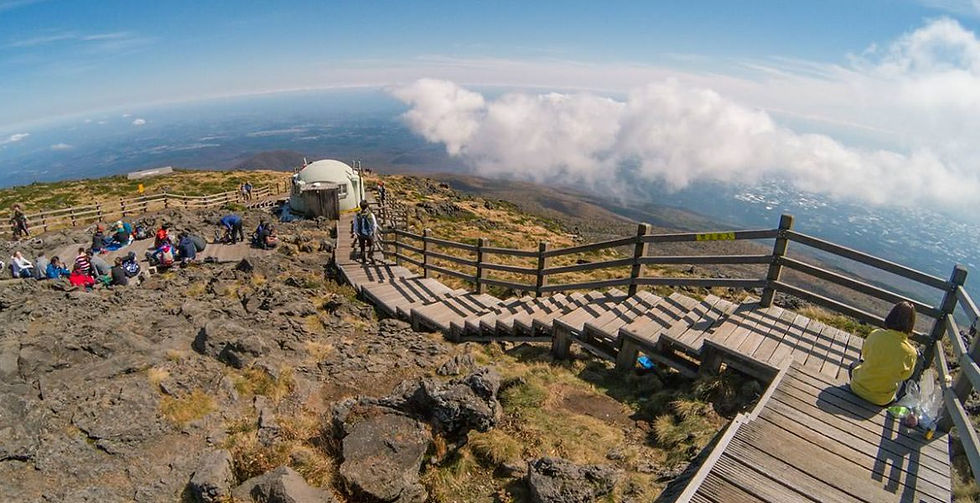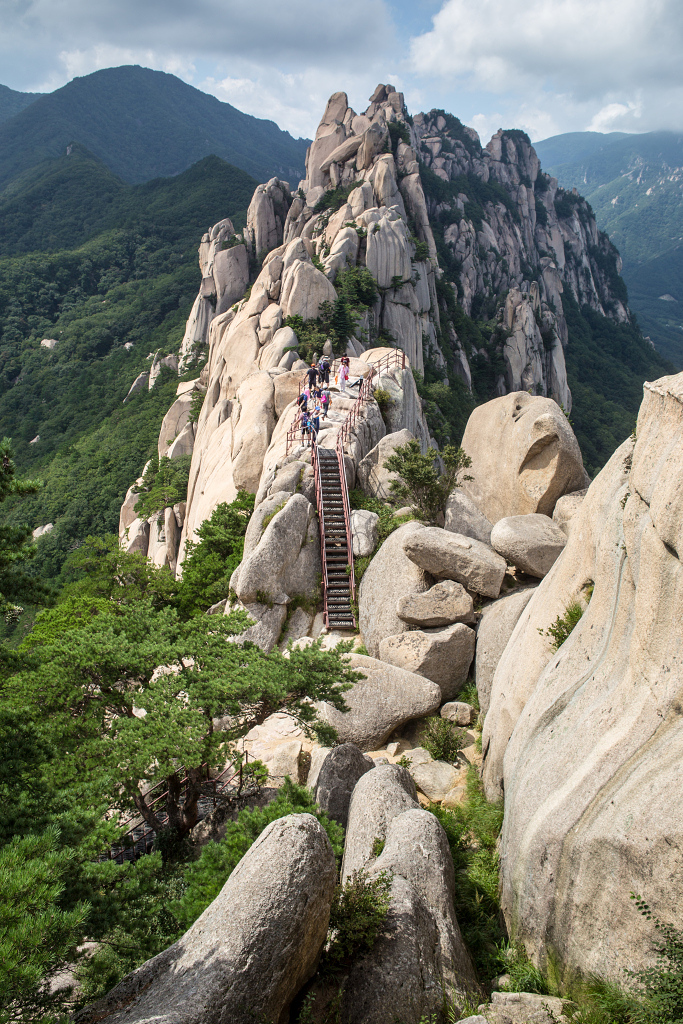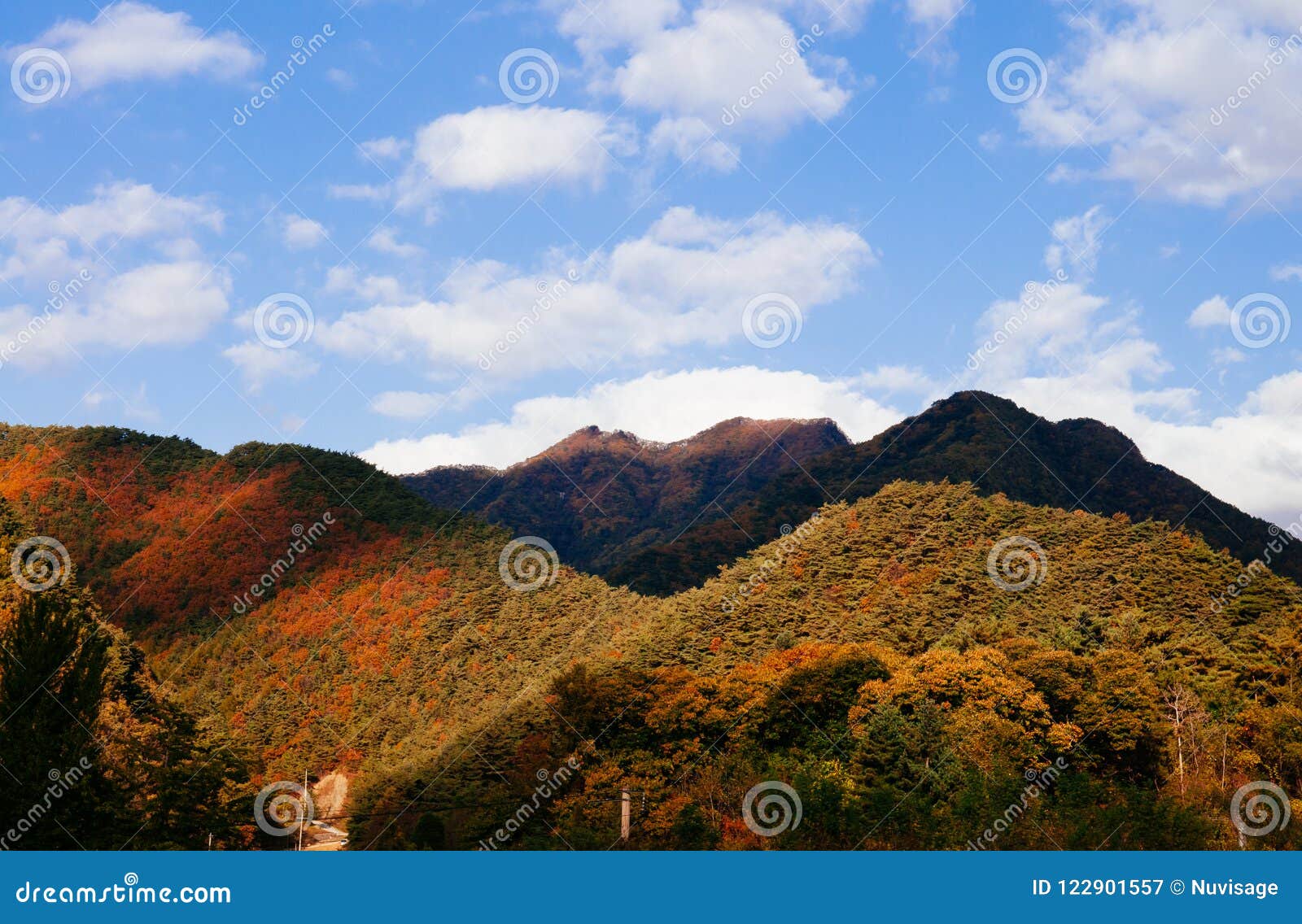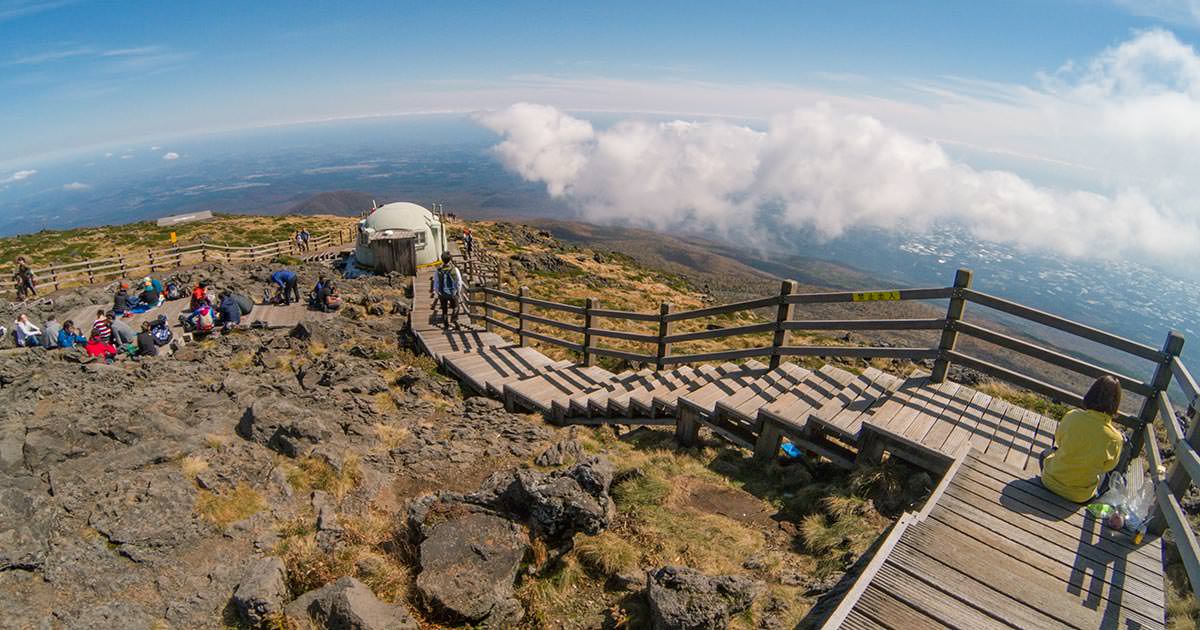South Korea's shapely terrain was a blessing: It has mountains for 70% of its landscape and expensive coffee shops for 30%. Yet, there are likewise numerous ways to the highest point of the mountain (in a real sense), and numerous brilliant ways that won’t be guaranteed to prompt the top. Here are some places to see autumnal colors in full force or, later in the year, the bleached landscape of a snow-covered mountaintop.
1. Seoraksan
Seoraksan is not the tallest or most beautiful mountain in South Korea, but it is one of the most beloved. Daecheongbong, Seoraksan's highest peak at 1,708 meters (approximately 5,600 feet), is a favorite among novice mountaineers. The climb to the summit can be completed in as little as three hours, depending on where you begin your journey. Lower down, the well-known Cheonbuldong Valley bursts into color in the fall.

2. Taebaeksan
Taebaeksan.Cheonjedan, or "altar for heavenly rites," is located on the 1,567-meter-highest peak, Janggunbong. This is where the devout used to perform rites to honor the gods in the past. When the branches are covered in ice and snow, Taebaeksan really comes into its own in the winter. The site is literally referred to as "snow flowers" in Korean. However, fall here is sadly underrated. Autumn weather is great for walking, and Taebaeksan's leaves are also changing, making it less monochromatic.

3. Jirisan
Jirisan is the largest of the Mainland Mountains in South Korea. The largest national park in South Korea is the park that covers the many peaks of the mountain. The most elevated top, Cheonwangbong (1,915 meters), is second just to Hallasan. However, the valleys, like the breathtakingly beautiful Piagol Valley to the south, are one of the best places to really get into the spirit of autumn. You can start at the Yeongok Hiking Support Center and walk the entire trail, which takes five hours, or you can stop and look around.
Because the valleys change later than the peaks, you can still see fall colors there for a few weeks after the peak season is over.

4. Hallasan
Hallasan, a 1,950-meter volcanic mountain that covers the majority of Jeju Island and is South Korea's tallest peak, is also more active in the winter. But that doesn't mean you can't enjoy its autumns and the surrounding volcanic cones and lava flows. Many people start at the Hallasan National Park Visitors Center and follow the Eorimok Trail up to the peak, where Baeknokdam, the Crater Lake at the top, awaits. It will take you five hours to complete the Seongpanak Trail, which begins at Seongpanak in the east and leads to the lake.








